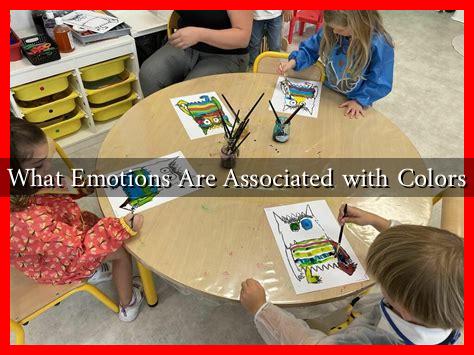-
Table of Contents
What Emotions Are Associated with Colors?
Colors have a profound impact on our emotions and behaviors. From the calming effect of blue to the energizing vibe of yellow, colors can evoke a wide range of feelings and reactions. Understanding the emotional associations of colors can be beneficial in various fields, including marketing, design, and psychology. This article explores the emotional connections we have with different colors, supported by research and real-world examples.
The Psychology of Color
Color psychology is the study of how colors affect human behavior and emotions. According to a study published in the journal “Color Research and Application,” colors can influence our perceptions and feelings in significant ways. Here are some key findings:
- Color perception is subjective: Individual experiences and cultural backgrounds can shape how we perceive colors.
- Colors can influence mood: Certain colors are known to evoke specific emotions, which can affect our mood and decision-making.
- Colors in marketing: Brands often use color strategically to elicit emotional responses from consumers.
Emotional Associations with Specific Colors
Different colors are commonly associated with particular emotions. Here’s a breakdown of some primary colors and their emotional connections:
- Red: Often associated with passion, love, and anger. Red can increase heart rates and create a sense of urgency, making it a popular choice in marketing for clearance sales.
- Blue: Known for its calming effects, blue is often linked to feelings of tranquility and trust. Many corporate brands, such as Facebook and IBM, use blue to convey reliability.
- Yellow: This bright color is associated with happiness and optimism. However, too much yellow can lead to feelings of anxiety. Fast-food chains like McDonald’s use yellow to attract attention and stimulate appetite.
- Green: Symbolizing nature and growth, green is often associated with health and tranquility. It is frequently used in wellness brands and eco-friendly products.
- Purple: Often linked to luxury, creativity, and spirituality, purple can evoke feelings of sophistication. Brands like Hallmark use purple to convey a sense of elegance.
- Black: While black can represent sophistication and power, it can also evoke feelings of sadness or mourning. It is a versatile color used in fashion and luxury branding.
- White: Associated with purity, simplicity, and cleanliness, white is often used in healthcare and technology to convey a sense of clarity and freshness.
Case Studies and Real-World Applications
Understanding the emotional impact of colors has practical applications in various industries. Here are a few case studies that illustrate this:
- Target’s Red: Target uses a bold red in its branding to create a sense of excitement and urgency, encouraging shoppers to make impulse purchases.
- Blue in Corporate Branding: Companies like American Express and Dell use blue to instill trust and reliability, which is crucial in financial and tech industries.
- Green in Eco-Friendly Products: Brands like Whole Foods use green to emphasize their commitment to sustainability and health, appealing to environmentally conscious consumers.
Statistics on Color and Emotion
Research has shown that color can significantly influence consumer behavior. According to a study by the Institute for Color Research, up to 90% of snap judgments made about products can be based on color alone. Additionally, a survey by the branding agency “Colorcom” found that color increases brand recognition by 80%.
Conclusion
Colors play a crucial role in shaping our emotions and perceptions. By understanding the emotional associations tied to different colors, individuals and businesses can make informed decisions in marketing, design, and personal expression. Whether you are designing a logo, choosing an outfit, or decorating your home, being mindful of color psychology can enhance your emotional well-being and influence the reactions of those around you.
In summary, the emotional impact of colors is a powerful tool that can be harnessed in various aspects of life. By recognizing the feelings associated with colors, we can create environments and experiences that resonate positively with ourselves and others.
For further reading on color psychology, you can explore resources like Color Psychology.

